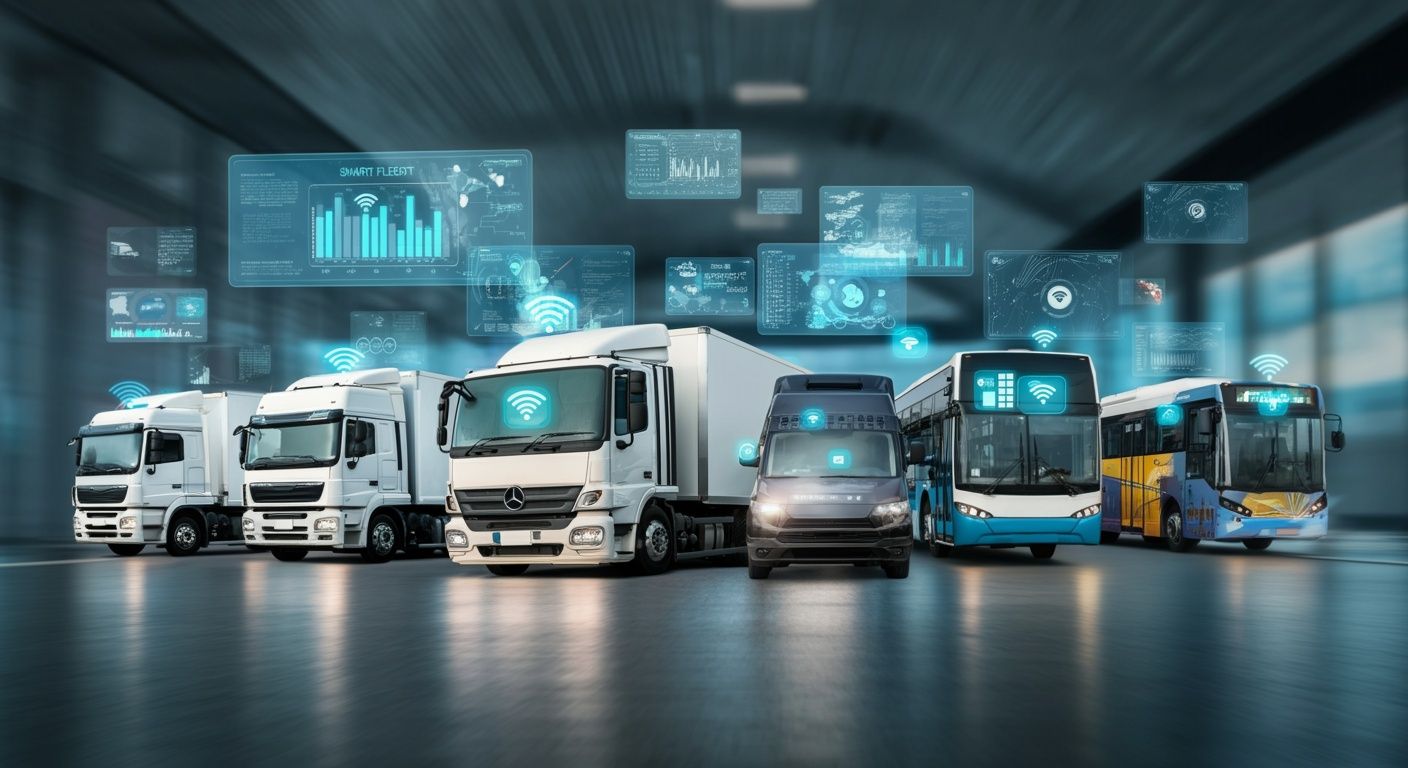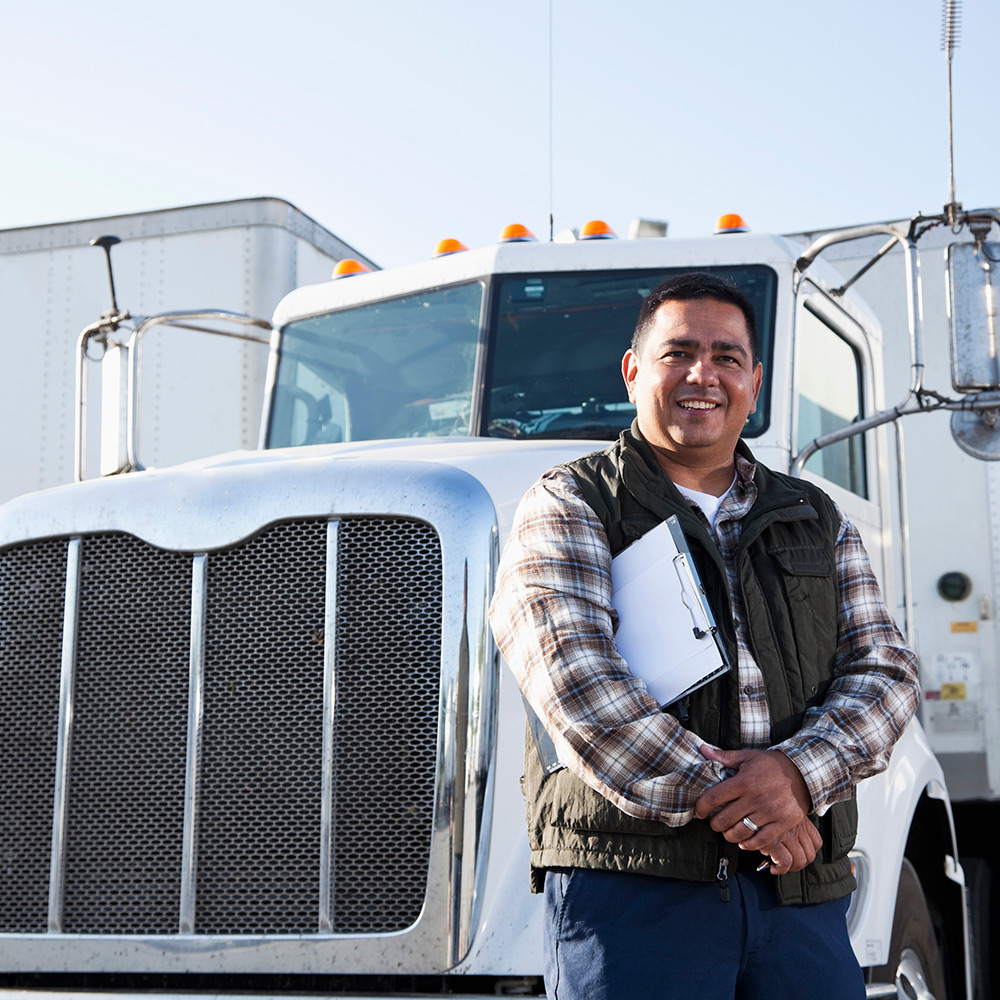Integrating New Technologies in Existing Fleet Management Infrastructure

Fleet management infrastructure refers to the entire system of technologies, hardware, software, processes, and communication tools used to manage a fleet of vehicles. This infrastructure includes everything from GPS tracking and electronic logging devices (ELDs), to dispatch software, toll management systems, telematics, maintenance scheduling tools, and even the transponders and mobile apps that drivers interact with daily. It acts as the operational backbone that keeps vehicles, drivers, data, and workflows connected and optimized.
In the past, fleet management infrastructure relied heavily on manual processes, paper-based records, and siloed systems. But today’s commercial fleets operate in a fast-moving, data-driven environment. Modern challenges like rising fuel costs, driver shortages, compliance regulations, and customer expectations demand more efficient, integrated systems.
Modernizing fleet management infrastructure is no longer optional — it’s essential. Updating your infrastructure with new technologies enables real-time visibility, automates repetitive tasks, reduces operational costs, and helps your business stay compliant and competitive. Fleets that invest in scalable, tech-forward infrastructure gain a measurable edge by increasing uptime, streamlining toll payments, improving driver safety, and making smarter routing and maintenance decisions.
Whether you operate five trucks or five thousand, integrating modern tools into your fleet management infrastructure is a critical step toward running a safer, smarter, and more profitable operation.
Key Technologies That Improve Fleet Management Infrastructure
As commercial fleets grow more complex, a robust and modern fleet management infrastructure relies on the integration of several advanced technologies. These tools enhance visibility, compliance, and efficiency across all aspects of operations — from route planning and toll tracking to maintenance and regulatory adherence. Below are five foundational technologies transforming today’s fleet operations.
A. GPS and Telematics Solutions
Real-time Asset Tracking: Telematics systems use GPS, onboard diagnostics, and mobile data to deliver real-time tracking of vehicles, trailers, and assets. This visibility helps fleet managers monitor vehicle location, driver behavior, speed, and idling time — all from a centralized dashboard.
Integration into Dispatch and Routing Platforms: By integrating telematics with dispatch software, fleets can dynamically assign jobs, reroute vehicles due to traffic or road closures, and ensure better customer ETAs. This connectivity allows for seamless operations, optimized fleet utilization, and reduced downtime.
Key Benefit: Real-time GPS and telematics enable faster decision-making and a more responsive fleet infrastructure.
B. Electronic Logging Devices (ELDs)
Compliance with FMCSA Regulations: ELDs are federally mandated for most commercial drivers in the U.S., ensuring accurate tracking of Hours of Service (HOS) and preventing driver fatigue. These devices automatically record driving time, status changes, and location data.
Data Integration Across Systems: Modern ELDs integrate with fleet management platforms, payroll systems, and compliance reporting tools. This reduces manual input, streamlines audits, and ensures drivers remain within legal limits without guesswork.
Key Benefit: ELDs are essential to maintaining a compliant and data-driven fleet management infrastructure.
C. Toll Management Systems (Bestpass)
Nationwide Toll Compatibility: Platforms like Bestpass provide toll coverage across major U.S. toll roads, including regional and coast-to-coast networks. With products such as Complete Pass and E-ZPass, fleets can operate seamlessly across 26+ states without managing multiple accounts or transponders.
Integrated Toll Tracking, Billing, and Analytics: Bestpass consolidates all toll transactions into a single, easy-to-audit monthly statement. Fleets can monitor toll usage in real-time, identify spending patterns, and integrate toll data into accounting and routing tools.
Reducing Violations and Improving Reporting: By automatically resolving transponder misreads and avoiding missed payments, Bestpass helps fleets reduce violations, late fees, and administrative burdens. Fleet managers can proactively catch issues before they affect the bottom line.
Key Benefit: Toll management systems like Bestpass are crucial to streamlining costs and maintaining control over toll-related spending.
D. Route Optimization & Fuel Management Tools
AI-Powered Route Efficiency: Route optimization software uses real-time data to recommend the most efficient paths, considering traffic, toll costs, terrain, and delivery windows. This not only reduces mileage but also enhances on-time performance.
Reducing Fuel and Toll Costs Through Data: Combined with telematics and toll systems, route planners help reduce fuel usage and unnecessary toll crossings by identifying cost-effective alternatives. Integration with fuel cards and GPS ensures full visibility into cost-per-route performance.
Key Benefit: Route optimization drives down variable costs while increasing operational efficiency across your fleet infrastructure.
E. Predictive Maintenance & Vehicle Health Monitoring
Keeping Vehicles Operational and Safe: Advanced diagnostics tools monitor engine performance, brake wear, tire pressure, and other critical components. Alerts are generated in real-time to address issues before they become breakdowns or safety concerns.
Integrating Diagnostics into Maintenance Planning: By feeding vehicle health data into fleet maintenance platforms, companies can create predictive schedules, automate part ordering, and reduce unscheduled downtime. Some systems even trigger maintenance workflows based on mileage or sensor data.
Key Benefit: Predictive maintenance enhances vehicle longevity and ensures safety without over-maintaining or missing critical service intervals.
Each of these technologies plays a vital role in strengthening fleet management infrastructure. When properly integrated, they provide a unified ecosystem that enables smarter decision-making, cost control, and compliance — while minimizing manual effort and risk.
Integration Challenges in Existing Fleet Management Infrastructure
While the benefits of modernizing fleet management infrastructure are substantial, many organizations encounter significant challenges when attempting to integrate new technologies into their existing systems. These challenges often stem from legacy architecture, operational inertia, and resource limitations — all of which can delay or complicate the transformation process.
Below are the most common obstacles that fleets face during integration, and why addressing them early is key to success.
1. Legacy System Compatibility
Many fleets operate with legacy software, outdated hardware, or proprietary systems that weren’t designed to support modern integrations. These older systems often lack open APIs or cloud compatibility, making it difficult to connect them with newer tools such as ELD platforms, route optimizers, or toll management systems like Bestpass.
For example, a fleet may have a 10-year-old dispatch system that doesn't communicate with its GPS tracking provider, leading to manual updates, redundant workflows, and increased error risk.
Challenge:
- Limited interoperability with newer platforms
- Increased reliance on manual data transfer
- High cost of replacing outdated systems
Solution:
- Use middleware or integration platforms where possible
- Prioritize tools with flexible APIs and modular design
- Gradually phase out obsolete systems as budget allows
2. Data Migration and Fragmentation
When upgrading or integrating systems, one of the most time-consuming tasks is migrating existing data — including vehicle records, driver profiles, toll history, maintenance logs, and compliance documentation.
Data often exists in multiple formats or across disconnected systems, making it difficult to merge without duplication or loss. If not carefully managed, this fragmentation can result in inconsistent reports, compliance errors, and inefficiencies that persist even after the upgrade.
Challenge:
- Disjointed data silos and inconsistent formats
- Risk of data loss, corruption, or duplication
- Extended downtime during migration
Solution:
- Conduct a data audit before integration
- Clean, standardize, and back up data before migrating
- Work with vendors that offer migration support and validation tools
3. Budget and ROI Concerns
Technology upgrades require investment — not just in licensing or equipment, but in labor, training, and change management. For fleets already managing tight margins, justifying the upfront cost of modernizing their infrastructure can be difficult, especially when the return on investment (ROI) isn’t immediately visible.
Decision-makers may hesitate to invest in systems that promise long-term savings but disrupt short-term operations or require upfront capital.
Challenge:
- High perceived or actual cost of new systems
- Difficulty projecting measurable ROI
- Risk aversion within leadership
Solution:
- Start with high-impact, low-barrier solutions (e.g., toll management automation through Bestpass)
- Track cost savings and efficiency improvements post-integration
- Use case studies from similar fleets to justify investment
4. Training Staff on New Tools
No matter how advanced the technology, its success depends on how well drivers, dispatchers, and managers can use it. If the learning curve is steep or training is insufficient, adoption suffers — leading to mistakes, frustration, and underutilization.
For example, rolling out a new ELD system without hands-on training could result in HOS violations or driver pushback. Similarly, staff may overlook powerful toll management analytics if they aren’t trained on the reporting interface.
Challenge:
- Resistance to change, especially from drivers or long-tenured staff
- Lack of training resources or dedicated onboarding time
- Misuse or underuse of new tools due to unfamiliarity
Solution:
- Provide interactive, role-specific training and documentation
- Select vendors with strong onboarding and customer support
- Appoint internal champions to assist with adoption and feedback
While integrating new technologies into fleet management infrastructure presents clear operational advantages, it also introduces a range of practical challenges. By acknowledging these barriers and preparing a phased, well-supported implementation plan, fleet operators can reduce friction and maximize the long-term impact of their infrastructure upgrades.
Future-Proofing Your Fleet Management Infrastructure
As the transportation and logistics industries continue to evolve rapidly, future-proofing your fleet management infrastructure is no longer a luxury — it’s a necessity. Fleets that build adaptable, data-driven systems today will be best positioned to capitalize on tomorrow’s opportunities and innovations. This requires not just investing in the latest tools, but also selecting platforms that are scalable, integrative, and built for change.
Emerging Technologies Reshaping Fleet Management
The next wave of fleet technologies goes beyond simple tracking and compliance — it’s about enabling predictive, automated, and intelligent operations. Some of the most impactful innovations on the horizon include:
1. Artificial Intelligence (AI) & Machine Learning
- AI can analyze massive volumes of fleet data to uncover patterns, forecast vehicle maintenance needs, and suggest cost-saving route adjustments.
- Machine learning can also help optimize toll spend by analyzing regional toll trends, violation patterns, and road usage.
2. Blockchain for Supply Chain Transparency
- Blockchain offers secure, verifiable transaction records for freight, maintenance, tolls, and fuel — ideal for fleets that need full transparency and audit trails.
- It can help reduce fraud, improve contract enforcement, and simplify cross-border fleet operations.
3. Autonomous-Ready Infrastructure
- As autonomous and semi-autonomous commercial vehicles begin to emerge, fleet systems must evolve to accommodate sensor data, remote control interfaces, and highly automated maintenance and routing workflows.
- Future-ready platforms will need to integrate directly with vehicle OEMs and onboard control systems.
Key Takeaway: Fleets that adopt forward-thinking infrastructure today — with open APIs and modular architectures — will be better prepared to incorporate these emerging technologies with minimal disruption.
Importance of Choosing Adaptable, Future-Compatible Platforms
A future-proof fleet management infrastructure must be built on flexible, integrative platforms that grow with your operations. This includes:
- Cloud-based systems that are easily updated and accessible anywhere
- Open APIs that allow seamless integration with other tools (dispatch, toll, fuel, maintenance)
- Modular add-ons that let you customize without needing a full system overhaul
- Vendor support and innovation pipelines to ensure long-term evolution
Bestpass, for example, offers API integration and nationwide compatibility, allowing fleets to scale their toll management system as new vehicles, regions, or regulations are added — without switching platforms.
By prioritizing platforms that don’t lock you into rigid workflows or outdated technology stacks, you ensure that your infrastructure can evolve along with your business and the industry.
Continuous Improvement Through Data
Perhaps the most critical factor in future-proofing is embracing data as a strategic asset. Every modern fleet management system — from telematics and tolling to ELDs and maintenance — generates valuable operational insights. Future-ready fleets harness this data to:
- Identify inefficiencies in routing, toll usage, or driver behavior
- Predict high-cost events like violations, part failures, or detours
- Optimize resource allocation (fuel, maintenance time, scheduling)
- Support regulatory compliance and risk mitigation
The more connected your systems are, the more actionable your insights become. By continuously analyzing fleet performance data, you can adapt proactively — not reactively — to industry changes, economic shifts, and operational demands.
Future-proofing your fleet management infrastructure means adopting flexible, data-driven systems that can evolve alongside technological and regulatory change. By investing in scalable platforms and preparing for innovations like AI and autonomous vehicles, you can ensure your fleet is not just ready for what’s next — it’s positioned to lead.

